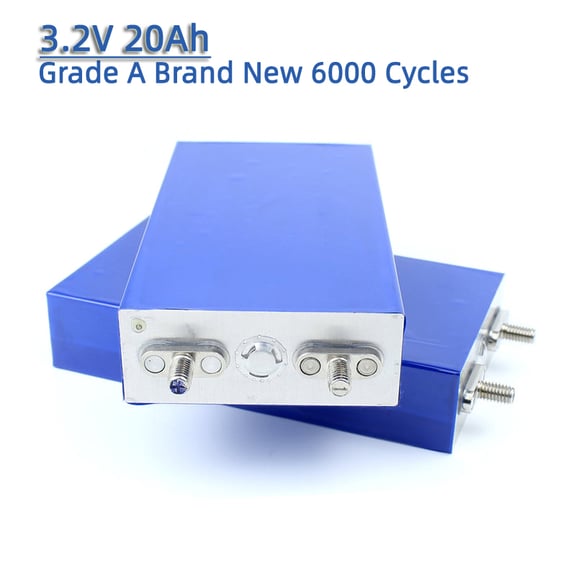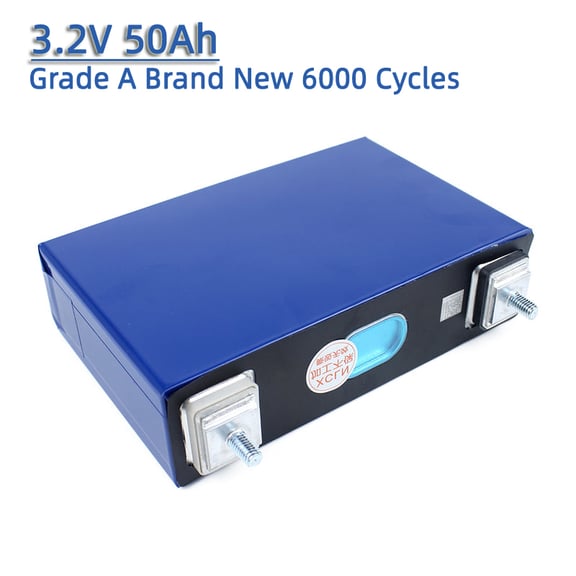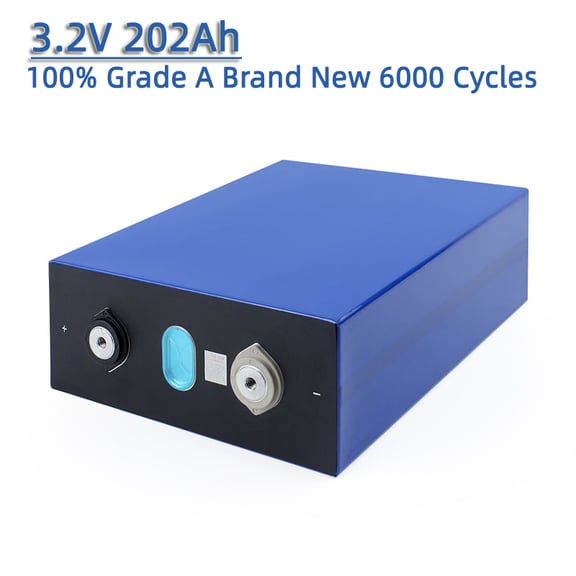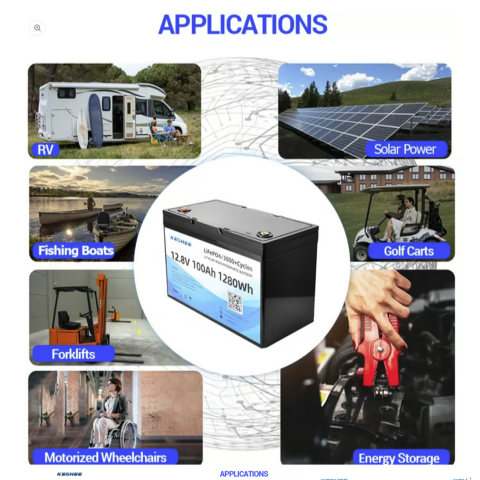Lithium Iron Phosphate (LiFePO4) 3.2V batteries are becoming increasingly popular due to their ability to provide a reliable and long-lasting power source. Understanding the features and characteristics of LiFePO4 3.2V batteries can help ensure optimal performance and longevity for your applications. This article will discuss the different types of LiFePO4 3.2V batteries, their advantages, and how to get the most out of them. Additionally, we will discuss safety tips for handling these batteries as well as common maintenance practices that should be followed in order to extend their life span.
What are LiFePO4 3.2V Batteries and Their Features

LiFePO4 (LFP) batteries are a type of lithium-ion battery that uses lithium iron phosphate in the cathode and graphite in the anode to store lithium ions. This combination is known for its high energy density, long life cycle, and safety features. LFP batteries are composed of chemicals that give them the advantage of having a high current rating, good thermal stability, and a long lifespan. This makes them an ideal choice for many applications.
LiFePO4 batteries are made up of four cells that are linked together in series. Each cell has a nominal voltage of 3.2 volts, resulting in an overall voltage of 12.8 volts for the entire battery. By connecting four LFP battery cells in series, you can create a 12-volt battery that is an ideal alternative for many 12-volt lead-acid batteries.
LiFePO4 (LFP) batteries has the following advantages:
High output voltage: the working voltage range of lithium iron phosphate battery is 2.5~3.6 V, and the platform is about 3.2 V;
Good safety performance: lithium iron phosphate cathode material has excellent electrochemical performance, the charging and discharging platform is very stable, and the structure is stable during the charging and discharging process, which can achieve zero volt over-discharge. When the battery is damaged internally or externally, the battery will not burn or explode, and the safety is better;
It has good high-temperature performance: the range of charge temperature is from 0 ℃ to 55 ℃, and the range of discharge temperature is from -30 ℃ to 60 ℃, so the battery structure is safe and intact;
High efficiency output: 3.65 ± 0.05V standard discharge, 1C continuous high current discharge, 2C instantaneous pulse discharge;
Convenient and fast: fast charging;
Environmental protection: the whole process is clean and non-toxic. All raw materials are non-toxic.
No rare resources: lithium iron phosphate battery uses phosphoric acid source, lithium source and iron source as raw materials, without strategic resources and rare resources.
The Different Types of LiFePO4 3.2V Batteries
Lithium iron phosphate batteries are generally divided into two categories:
LiFePO4 Batteries
LiFePO4 Battery is a battery that uses manganese dioxide as positive data, or its alloy metal as negative data, and uses non-aqueous electrolyte solution. The lithium metal battery has a high energy density, which can actually reach 3860 watts/kg. However, because its nature is not stable and cannot be recharged, it can only be used as a renewable energy battery.


Lithium Ion Batteries
Lithium ion batteries are those that use lithium alloy metal oxide as positive data, graphite as negative data and non-aqueous electrolyte.
Lithium-ion battery can be recharged and is developed as an important energy battery. However, because of its combination with different elements, the materials that make up the positive electrode have different functions in various aspects, which leads to constant disputes on the selection of positive electrode materials in the industry. Generally speaking, more energy batteries mainly include lithium iron phosphate battery, lithium iron phosphate manganate battery, lithium iron phosphate cobalt battery and lithium iron phosphate ternary battery (nickel cobalt manganese ternary).
What are the Use Cases for 3.2V LiFePO4 Batteries

LiFePO4 (Lithium Iron Phosphate) prismatic batteries are becoming increasingly popular due to their numerous benefits over traditional lead-acid batteries. These benefits include longer lifespan, faster charging, higher energy density, and improved safety. As a result, LiFePO4 prismatic batteries have become the preferred choice for a wide range of applications, including UPS, golf carts, motorcycles, e-bikes, yachts, solar power, wind power, RVs, ice fishing, fishing boats, forklifts, motorized wheelchairs, and home storage systems.
UPS
Uninterruptible power supply (UPS) systems provide backup power during outages or brownouts. LiFePO4 prismatic batteries are an excellent choice for UPS systems due to their high energy density, longer lifespan, and faster charging times. These batteries are also more reliable and safer than traditional lead-acid batteries, making them ideal for critical applications.
Golf Carts, E-Bikes, and Motorcycles
LiFePO4 prismatic batteries are ideal for powering electric vehicles, including golf carts, e-bikes, and motorcycles. These batteries provide longer range and faster charging times than lead-acid batteries, making them more practical for daily use. They are also much lighter than lead-acid batteries, improving the overall performance of the vehicle.
Yachts, RVs, and Home Storage Systems
LiFePO4 prismatic batteries are also ideal for use in yachts, RVs, and home storage systems. These batteries can store large amounts of energy, making them ideal for applications that require backup power or off-grid power solutions. Additionally, these batteries can be charged by solar power or wind power, making them a sustainable and eco-friendly solution.
Ice Fishing and Fishing Boats
LiFePO4 prismatic batteries are perfect for powering ice fishing equipment and fishing boats. These batteries provide long-lasting power and can withstand harsh weather conditions, making them ideal for use in these applications.
Forklifts and Motorized Wheelchairs
LiFePO4 prismatic batteries are also commonly used to power forklifts and motorized wheelchairs. These batteries provide longer run times and faster charging times than traditional lead-acid batteries, making them more practical for everyday use.
Benefits of Using a LiFePO4 Battery
The benefits of using a LiFePo4 Battery has these advantage as bellow:
Improvement of safety performance
The p-o bond in lithium iron phosphate crystal is stable and not easy to be destroyed. Even under high temperature or overcharge, the structure will not collapse like lithium cobalt oxide, and will not release heat or form strong oxidizing substances, so it has good safety. It is reported that in the actual operation of acupuncture or short-circuit experiments, a small number of samples were found burning, but no explosion occurred. However, in the overcharge experiment, the explosion still occurred when a high voltage charges several times the self-discharge voltage was used. However, compared with common electrolyte lithium cobalt acid battery, its overcharge safety has been greatly improved.
Read more:
The Benefits of LiFePO4 Prismatic Batteries and Their Use Cases
The Ultimate Guide to 12.8V 250Ah LiFePO4 Batteries for Solar Storage
Improved Life
LiFePO4 battery refers to lithium ion batteries with lithium iron phosphate as cathode material.
The cycle life of long-life lead-acid battery is about 300 times, and the maximum is about 500 times, while the cycle life of lithium iron phosphate power battery is more than 2000 times, and the standard charging (5-hour rate) can reach 2000 times. The lead-acid batteries of the same quality are new half a year, old half a year, and maintenance half a year, and the longest service time is 1~1.5 years, while the lithium iron phosphate battery can be used under the same conditions, with a theoretical life of 7~8 years. In general, the cost of performance is more than four times that of lead-acid battery in theory. High current 2C, fast charging and discharging. Under the special charger, the battery can charge 1.5c in 40 minutes and the starting current can reach 2C, but the lead-acid battery has no such performance.
High-capacity
It has larger capacity than ordinary batteries (lead acid, etc.).
No Memory Effect
Rechargeable batteries usually work at full load and will soon be lower than the rated capacity, which is the so-called memory effect. Like nickel hydrogen battery and nickel cadmium battery, both have memory, but lithium iron phosphate battery has no such phenomenon. No matter what state the battery is in, it can be charged and used at any time without having to turn it off before charging.
Light Weight
The volume of lithium iron phosphate battery with the same capacity is two-thirds of that of lead-acid battery, and the weight is one-third of that of lead-acid battery.
What are the Concerns of Customers and Purchasers on 3.2V LiFePO4 Battery
For standard products, customers will mainly look at the brand of the battery, whether it is a Grade A battery, battery capacity, service life, and whether there are overseas warehouses; For individual users, the next concern is price, while for corporate users, the focus is delivery time.
For customized products: In addition to the above standards, customers also value whether the factory can customize batteries with the company's name. Therefore, customers will need to place a sample list first, and then pursue a stable relationship of long-term cooperation.
You can find some answers to the concerns in the contents mentioned above, and the other answers to the concerns are in the next section.
What Are the Differences between Keshee Battery and Its Peers
The difference between our batteries and other brands such as CATL, EVE, GUOXUAN HIGH-TECH is that some factories sell Grade-B batteries, while we provide Grade-A batteries.
We have a wide range of battery categories, so customers have many choices.
We have the strong ability of customizing battery products, and the customized batteries are especially suitable for the customers who run own company.
The 3.2V LiFePO4 Batteries manufactured by KESHEE are featured by high density, which means that our batteries have stronger and larger capacity compared with its peers.
Our diversity in shipping couriers allows us to ship all over the world on time and at competitive pricing. We are very experienced in exporting and can handle shipping arrangements, packaging, quotas, and custom formalities so that your shipment is shipped on time to you. We work with many shipping companies and can negotiate very competitive rates for you.
What Are the Best Ways to Maximize Performance and Longevity of Your 3.2V LiFePO4 Battery
LiFePO4 battery has no memory effect. Therefore, the capacity of lithium iron phosphate battery will be greatly damaged if it is recharged after consuming the power of lithium iron phosphate battery. Therefore, LiFePO4 battery does not need to be fully charged.
Do not Overcharge or Over-discharge the LiFePO4 Battery
If overcharged, the capacity of LiFePO4 battery will be permanently damaged; If it is overcharged, there is a risk of explosion. However, there is no danger of overcharging when the LiFePO4 battery equipment is plugged in all night, because of course, these devices will stop charging or reduce the current to a minimum when they are fully charged (only to make up for a small amount of power consumption in the night). If it is over-discharged, the lithium iron phosphate battery will not be charged and cannot be used directly. It needs to be removed for special activation; It can't be used again.
The Life of LiFePO4 Battery is Related to the Charging Current (or charging rate)
It can be said that the life of LiFePO4 battery is related to the power supply. Generally speaking, the service life of lithium iron phosphate battery will be lower if fast charging is used. However, as long as the current does not exceed the amount of full charge for 1 hour, the effect of charging rate on life is not significant.
The only "problem" with using the charging bank, computer USB interface, etc. is that the power supply current is relatively small and the charging is very slow; There is no harm to battery life. In addition to extremely poor quality chargers, today's devices no longer need a special charging power supply, unlike in the early days, each cell phone battery must be equipped with a special charger. The slower charging current will protect the battery.
Operating LiFePO4 Batteries at Room Temperature
Using LiFePO4 battery, charging LiFePO4 battery or storing LiFePO4 battery for a long time at high temperature will permanently reduce the capacity. Charging LiFePO4 battery at low temperature (<0 ℃) will cause permanent damage. However, if it is only used at low temperature, it will only temporarily experience the capacity reduction, and will recover after returning to normal temperature. There is no big problem in storing LiFePO4 battery at low temperature, but it cannot be stored at too low temperature for too long.
The above is about LiFePO4 batteries. Of course, our company also has other types of batteries, such as eBike battery, lithium polymer battery, power tool battery, home storage battery, motorcycle battery and marine battery, etc. Contact us to get more information. The contact information has email-box ([email protected]) and whatsapp (WhatsApp: +86 15019297714).
